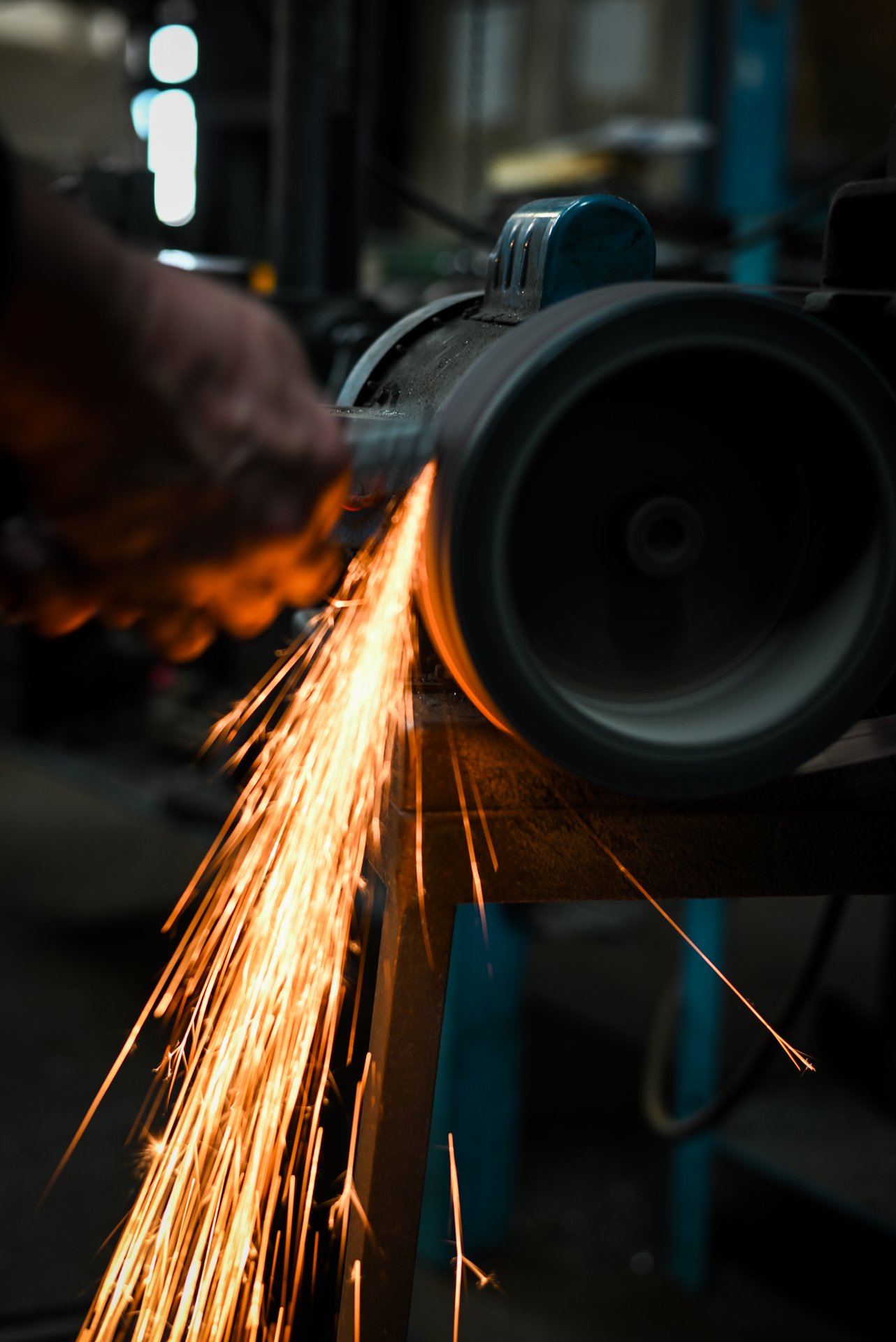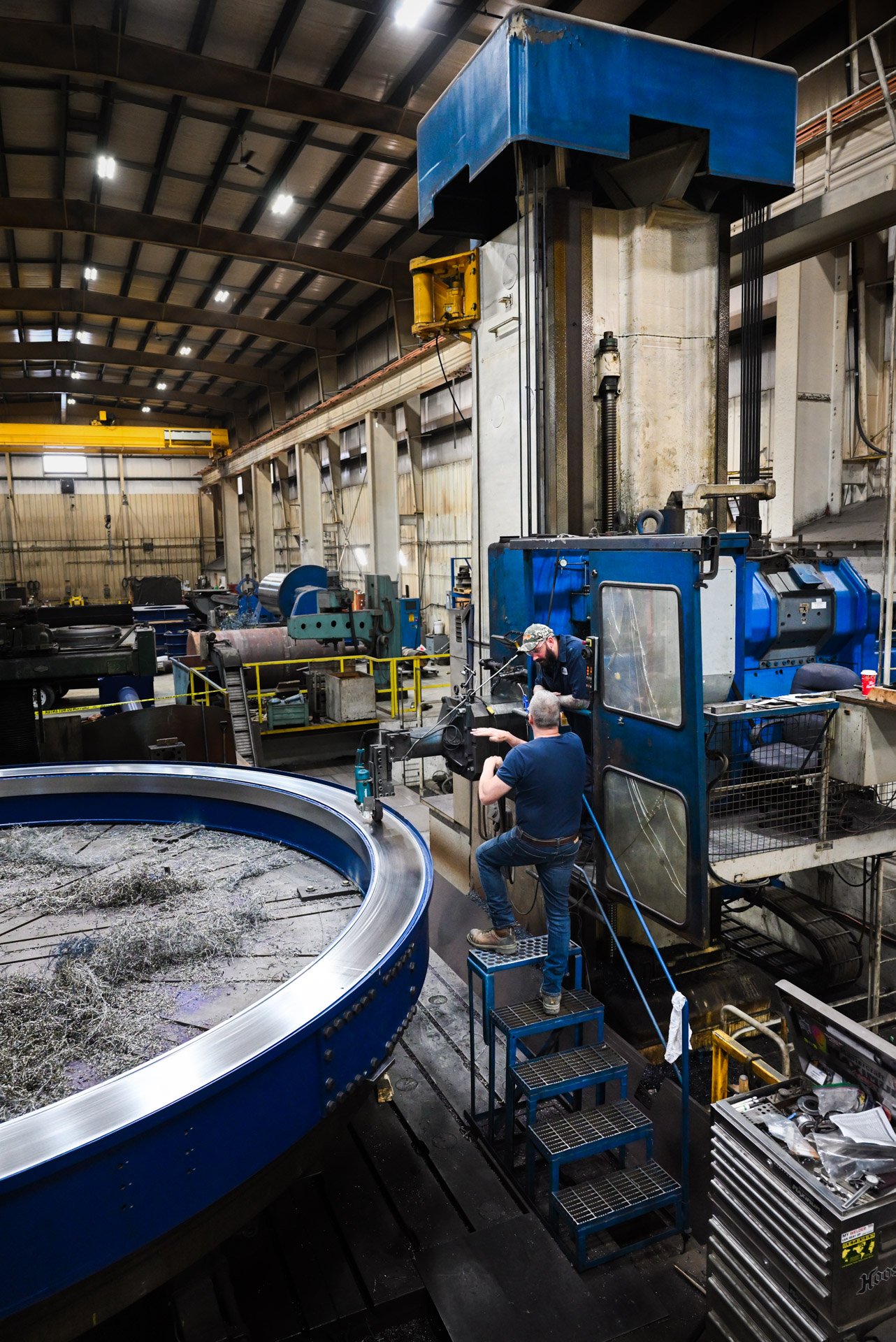How Industrial Photography Can Showcase the Human Element in Manufacturing
The Power of Industrial Photography in Manufacturing
Industrial photography is a creative medium that has the potential to transform the way we perceive and understand the manufacturing industry. Beyond the machinery and production lines, this form of photography has the unique ability to showcase the human element in manufacturing. By capturing the workers, their skills, and their stories, industrial photography presents a shift in perspective, elevating the role of humans in the manufacturing process. This article explores the techniques, benefits, and challenges of industrial photography, highlighting its power to humanize the industry, break stereotypes, enhance branding, and create a deeper connection with the audience. Through the lens of industrial photography, we can celebrate the vital contribution of the people behind the process and unveil the true essence of manufacturing.
Understanding the Role of Visual Storytelling
Industrial photography might not be the first thing that comes to mind when thinking about capturing the human element in manufacturing. However, this often overlooked art form has the power to showcase the human side of an otherwise mechanized industry. Through visual storytelling, industrial photography can shed light on the people behind the manufacturing process, their contributions, challenges, and successes. By capturing authentic moments and focusing on the human element, industrial photography brings life and personality to an otherwise sterile environment.
The Role of Humans in Manufacturing: Shifting Perspectives
In an age of automation and advanced technology, it's easy to forget the vital role humans play in the manufacturing industry. From operating complex machinery to problem-solving on the factory floor, workers are the driving force behind production. Industrial photography provides an opportunity to shine a spotlight on their contributions and showcase the expertise and skills they bring to their roles.
However, it's also important to acknowledge the challenges faced by workers in industrial settings. From physical demands to monotonous tasks, the human element in manufacturing often experiences unique struggles. Industrial photography can help convey these challenges, fostering greater understanding of the process to manufacture the goods for your clients.
Capturing the Human Element: Techniques and Approaches in Industrial Photography
To effectively capture the human element in manufacturing, photographers can employ various techniques and approaches. Choosing the right settings and lighting is crucial to create an atmosphere that reflects the reality of the industrial environment. Natural lighting or strategically placed artificial lighting can enhance the mood and draw attention to the human subjects.
Emphasizing facial expressions and body language allows viewers to connect with the workers on a deeper level. These non-verbal cues convey emotions and experiences, making the photographs relatable and engaging. Candid shots, taken when the subjects are unaware, can capture authentic moments and reveal the true essence of the workers' experiences.
Highlighting Workers: Celebrating the People Behind the Process
Industrial photography provides a platform to celebrate the people behind the manufacturing process and portray them as skilled professionals. By showcasing their expertise, dedication, and craftsmanship, these photographs challenge preconceived notions about the industry. By highlighting the human element, industrial photography acknowledges the importance of the workers and their invaluable contributions.
Additionally, sharing personal stories and successes can add depth and context to the photographs. These stories humanize the industrial setting and create connections between the viewers and the workers. When personal narratives are woven into the visual storytelling, it becomes a powerful tool to evoke empathy, appreciation, and admiration for the individuals who make manufacturing possible.
Through industrial photography, we can capture the human element in manufacturing, tell their stories, and celebrate the people who bring life and character to an industrious world. Let's not forget that behind every product we use, there are the faces and stories of the workers who made it possible.
Humanizing the Manufacturing Industry: Breaking Stereotypes through Photography
When people think of the manufacturing industry, they often conjure up images of cold, impersonal machines and faceless workers toiling away in a monotonous environment. But industrial photography has the power to change that perception. By capturing the human element in manufacturing, we can dispel misconceptions and challenge stereotypes, showcasing the real people behind the scenes who bring products to life.
Through thoughtful composition and storytelling, industrial photographers can highlight the passion, creativity, and skill that goes into every step of the manufacturing process. From the engineer meticulously designing a new prototype to the line worker carefully assembling the final product, these images remind us that manufacturing is a dynamic and human endeavor.
Showcasing Diversity and Inclusivity in the Workforce
Another important aspect that industrial photography can capture is the diversity and inclusivity within the manufacturing industry. By featuring workers of different ages, genders, ethnicities, and backgrounds, we can break down barriers and show that manufacturing is a field open to everyone.
These photographs tell a powerful story of unity and collaboration, shedding light on the individuals who contribute to the success of a company. By highlighting the diverse perspectives and talents within the workforce, industrial photography can inspire more individuals to pursue careers in manufacturing and create a more inclusive industry for all.
Impact and Benefits: How Industrial Photography Enhances Branding and Marketing
In today's saturated market, it's crucial for businesses to connect with customers on an emotional level. Industrial photography allows companies to humanize their brand by showcasing the people behind their products. When customers see the faces, smiles, and determination of the individuals involved in manufacturing, they feel a deeper connection to the brand and its values.
By tapping into the emotions of customers, industrial photography can evoke a sense of trust, loyalty, and empathy. These images remind customers that behind every product is a team of dedicated individuals who care about quality and craftsmanship.
Building Trust and Authenticity for the Brand
Authenticity is highly valued by consumers today, and industrial photography can be a powerful tool for building trust. By providing a behind-the-scenes look at the manufacturing process, companies show transparency and invite customers into their world.
When customers see the reality of how products are made, they develop a deeper appreciation for the brand's commitment to excellence. Industrial photography allows companies to showcase the integrity and authenticity of their manufacturing practices, boosting their reputation and solidifying customer trust.
Challenges and Considerations: Ethical and Practical Aspects of Industrial Photography
While industrial photography offers numerous benefits, it's essential to prioritize the privacy and safety of workers. Consent should always be obtained before capturing images of individuals, and precautions should be taken to ensure that workers are comfortable being photographed.
Additionally, industrial sites can be potentially hazardous, so photographers must adhere to safety protocols and guidelines to protect themselves and those around them. By respecting the privacy and safety of workers, industrial photography can be conducted responsibly and ethically.
Addressing Potential Resistance or Pushback
Not everyone may be initially receptive to the idea of industrial photography. Some workers may feel uncomfortable being in front of the camera or worry about their privacy. It's crucial for photographers and companies to address these concerns and communicate the purpose and benefits of capturing the human element in manufacturing.
Building trust and fostering open communication with workers can help alleviate any potential resistance. By involving employees in the process and ensuring their voices are heard, industrial photography can be a collaborative and positive experience.
Embracing the Human Side of Manufacturing through Photography
Industrial photography has the ability to transform the way we perceive the manufacturing industry. By breaking stereotypes, showcasing diversity, and connecting with customers on an emotional level, it humanizes manufacturing and emphasizes the importance of the people who bring products to life.
Through ethical and responsible practices, industrial photography can enhance branding and marketing efforts while respecting the privacy and safety of workers. By embracing the human side of manufacturing, companies can build trust, authenticity, and a strong connection with their customers. So let's celebrate the human element in manufacturing and let industrial photography tell the remarkable story of the people behind the products we love.
In conclusion, industrial photography serves as a powerful tool to showcase the human element in manufacturing. By capturing the faces, stories, and skills of the workers, this form of photography humanizes the industry, breaking stereotypes and fostering a deeper connection with the audience. The impact is not only felt in branding and marketing efforts but also in transforming perceptions and recognizing the invaluable contribution of workers in the manufacturing process. Through industrial photography, we have the opportunity to celebrate the individuals behind the machinery and appreciate the human side of manufacturing, ultimately creating a more empathetic and inclusive narrative for this crucial industry.
FAQs
1. How can industrial photography highlight the human element in manufacturing?
Industrial photography showcases the human element in manufacturing by capturing the workers, their skills, and their stories. It focuses on portraying the individuals behind the machinery, emphasizing their contributions and showcasing their professionalism. Through techniques like lighting, candid shots, and emphasizing facial expressions, industrial photography brings out the human side of manufacturing.
2. What benefits does industrial photography bring to branding and marketing in the manufacturing industry?
Industrial photography enhances branding and marketing efforts in the manufacturing industry by creating a deeper emotional connection with the audience. By humanizing the industry, it builds trust, authenticity, and empathy for the brand. Industrial photography allows companies to showcase their workers' expertise and dedication, making their products or services more relatable and appealing to customers.
3. What are the ethical considerations of industrial photography in manufacturing?
Respecting privacy and the safety of workers is a crucial ethical consideration in industrial photography. It is important to obtain consent from workers before taking their photographs and to ensure that their personal information and identities are protected. Additionally, the photographer should adhere to safety guidelines and not interfere with the normal operations of the manufacturing facility, prioritizing the well-being of both workers and equipment.
4. How can industrial photography help in dispelling stereotypes about the manufacturing industry?
Industrial photography helps dispel stereotypes about the manufacturing industry by showcasing the diversity and inclusivity of the workforce. By highlighting the people behind the process, industrial photography challenges preconceived notions and biases, presenting a more accurate and multifaceted image of the industry. Through capturing the skills and stories of workers, industrial photography breaks down stereotypes and fosters a more inclusive perception of manufacturing.







